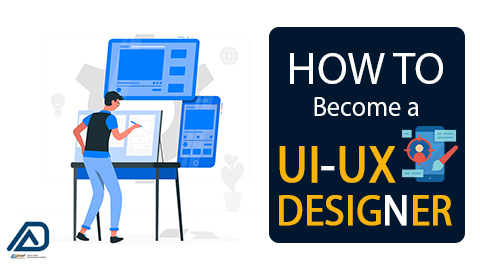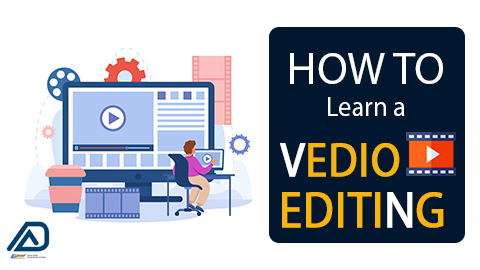Popular Topics
Career Oriented
Jewellery Design
Graphic Design
Leading jewellery design institutes in Surat
Best training institute in Surat
Best jewellery design courses in Surat
Fashion Design
UX
Surat education hub
Leading jewellery design institutes in my area
Photoshop
Institute for learning in Surat
Fashion Design in India
jewellery institute
What is Video Editing?
Best jewellery design courses near me
Top UI/UX institute Surat
Jewellery design workshops near me
ui/ux
Surat learning center
learn fashion design in surat
Prototyping
Video Editing in India?
What is Graphic Design?
UI/UX training center Surat
UI/UX courses near me
UI
Jewellery design training programs in Surat
Leading Graphic Design school in my area
Coreldraw
Video Editing
Surat video editing courses
Fashion Design training programs in Surat
Graphic Design training center close to me
What is Fashion Design?
learn Graphic design
best graphic design schools near me
Graphic Design programs nearby
Jewellery design workshops in Surat
Top Graphic Design institute
Top jewellery design classes in Surat
best colleges for graphic design near me
UI/UX design in India
Top-rated institute in Surat
Fashion Design classes nearby
Best UI/UX training center near me
digital design schools near me
Leading UI/UX institute in my area
Fashion Design courses in the vicinity
UI/UX courses Surat
Fashion Design institutes nearby
jewellery courses near me
Surat UI/UX training programs
Learn video editing in Surat
Video Editing courses near me
Nearby Fashion Design courses
Local Fashion Design workshops
Fashion Design training close to me
Leading UI/UX institute in Surat
learn fashion design
Top Fashion Design classes in Surat
Learn Video editing
Leading Fashion Design institutes in Surat
Fashion Design workshops in Surat
Best Graphic Design training center in surat
Top jewellery design classes nearby
Jewellery design training programs nearby
Video editing workshops Surat
Top Video Editing institute nearby
jewellery institute in surat
Graphic Design institute nearby
Graphic Design courses near me
Top UI/UX institute nearby
Best Fashion Design courses in Surat
UI/UX training programs nearby
Video Editing programs nearby
best graphic design institute in near me
Best Video Editing training center close to me
Popular Instructors
All Graphic Oriented Courses
What you'll learn
Video Editing Software: Familiarize yourself with professional video editing software such as Adobe Premiere Pro, Final Cut Pro, DaVinci Resolve, Avid Media Composer, or other industry-standard tools.
Importing and Organizing Footage: Learn how to import video and audio files into your editing software and organize them efficiently for easy access.
Cutting and Trimming: Master the fundamental skill of cutting and trimming video clips to remove unwanted content and create a cohesive narrative.
Transitions: Understand and apply various transitions (cuts, fades, dissolves, wipes) to create smooth connections between clips and scenes.
Audio Editing: Learn how to adjust audio levels, add background music, sound effects, and voiceovers. Sync audio with video for better quality.
Color Correction: Explore color correction and color grading techniques to enhance the visual quality of your videos.
Effects and Graphics: Add visual effects, text overlays, graphics, titles, and animations to enhance your video's storytelling and visual appeal.
Speed Control: Manipulate the speed of video clips for slow-motion and fast-motion effects.
Problem Solving: Develop problem-solving skills to overcome challenges that may arise during the editing process.
What you'll learn
Typography: Learn how to select and pair fonts, create readable text layouts, and use type effectively in design.
Color Theory: Understand the principles of color, how to create color schemes, and how color affects emotion and perception.
Layout and Composition: Learn how to arrange visual elements, such as text, images, and graphics, to create balanced and aesthetically pleasing designs.
Graphic Design Software:Become proficient in industry-standard design software such as Adobe Creative Cloud, including Photoshop (for image editing), Illustrator (for vector graphics), and InDesign (for page layout).
Digital Tools: Familiarize yourself with other design and prototyping tools, such as Sketch, Figma, and CorelDRAW, which are commonly used in the field.
Image Editing: Develop skills in image editing, including retouching, resizing, and enhancing photographs and graphics.
Vector Graphics: Learn how to create and manipulate vector graphics, which are essential for creating logos, icons, and scalable designs.
Branding and Logo Design: Understand the process of creating brand identities, logos, and guidelines for consistent brand representation.
Print Design: Gain knowledge of print design principles for creating materials such as posters, brochures, business cards, and packaging.
Illustration: Develop illustration skills for creating custom graphics, icons, and artwork that can be integrated into your designs.
What you'll learn
Learning UI/UX design involves acquiring a combination of design principles, technical skills, and a deep understanding of user behavior. Here's what you can expect to learn when pursuing UI/UX design:
Design Fundamentals, User Experience (UX) Design, User Interface (UI) Design, Research and Usability Testing, Interaction Design, Accessibility, Front-End Development Basics, Industry Tools and Software, Portfolio Development
What you'll learn
Design Principles: Understand the fundamental principles of design, including color theory, balance, proportion, harmony, rhythm, and emphasis. These principles are essential for creating aesthetically pleasing and well-balanced designs.
Fashion History and Theory: Study the history of fashion, its evolution, and its impact on culture and society. Analyze different fashion movements and trends throughout history.
Fashion Sketching and Illustration: Develop your ability to sketch and illustrate fashion designs, both by hand and using computer-aided design (CAD) software. These sketches are essential for communicating your design concepts.
Fabric and Material Knowledge: Gain an understanding of various fabrics, textiles, and materials used in fashion design. Learn how to select the right materials for specific designs and understand their properties.
Pattern Making and Draping: Learn how to create patterns for garments, allowing you to cut and sew pieces together to form clothing. Draping involves manipulating fabric directly on a dress form to create patterns and designs.
Sewing and Garment Construction: Develop practical sewing skills, including machine sewing, hand sewing, and garment construction techniques. You'll learn how to turn your design sketches into actual clothing.
Fashion designers cater to a wide range of audiences with diverse tastes, needs, and preferences. Identifying and targeting the right audience is essential for the success of a fashion brand or designer
Fashion Illustration and Portfolio Development: Create a professional fashion design portfolio that showcases your best work, including sketches, designs, and completed projects.
Textile Design: Explore the art of textile design, which involves creating patterns and prints for fabrics used in fashion.
Costume Design: If you're interested in costume design for theater, film, or television, you may study costume design techniques, historical costumes, and character analysis.
What you'll learn
Design Principles: You'll learn fundamental design principles, including concepts like balance, proportion, harmony, and rhythm. Understanding these principles is crucial for creating visually appealing jewelry.
Materials and Gemology: Gain knowledge about various materials used in jewelry making, such as metals (gold, silver, platinum), gemstones (diamonds, sapphires, emeralds, etc.), and other materials like pearls and enamels. Study gemology to understand the characteristics and value factors of gemstones.
Sketching and Rendering: Develop your sketching and rendering skills to illustrate your jewelry design ideas effectively. This is essential for conveying your vision to clients, manufacturers, or fellow artisans.
Computer-Aided Design (CAD): Learn how to use CAD software to create digital 3D models of your jewelry designs. CAD allows for precise design and can be a valuable tool for both design and presentation.
Jewelry Manufacturing Techniques: Understand various jewelry manufacturing techniques, including metal casting, soldering, stone setting, engraving, polishing, and finishing. Gain hands-on experience working with jewelry-making tools and equipment.
Stone Setting: Explore different methods of setting gemstones into jewelry, such as prong settings, bezel settings, pave settings, and channel settings. Learn how to securely and aesthetically incorporate gemstones into your designs.
Wax Carving: Wax carving is a technique used to create jewelry molds for casting. You'll learn how to carve intricate patterns and designs into wax, which will be used to make the final metal piece.
Jewelry History and Styles: Study the history of jewelry design, including different eras, styles, and cultural influences. This knowledge can inspire your own design work and help you understand the evolution of jewelry design.
Business and Marketing: If you plan to start your own jewelry design business, you'll need to learn about marketing, pricing, budgeting, and managing a jewelry business. Understanding market trends and consumer preferences is also crucial.
Custom Design: Many jewelry designers offer custom design services. Learn how to work with clients to understand their preferences and create unique, one-of-a-kind pieces tailored to their needs and desires.
Portfolio Development: Create a portfolio of your best work to showcase your skills and creativity. A strong portfolio is important for job applications, freelance work, or starting your own jewelry design business.
Ethical and Sustainable Practices: With growing awareness of ethical and sustainable practices in the jewelry industry, you may study how to source materials responsibly and incorporate sustainable principles into your designs.







